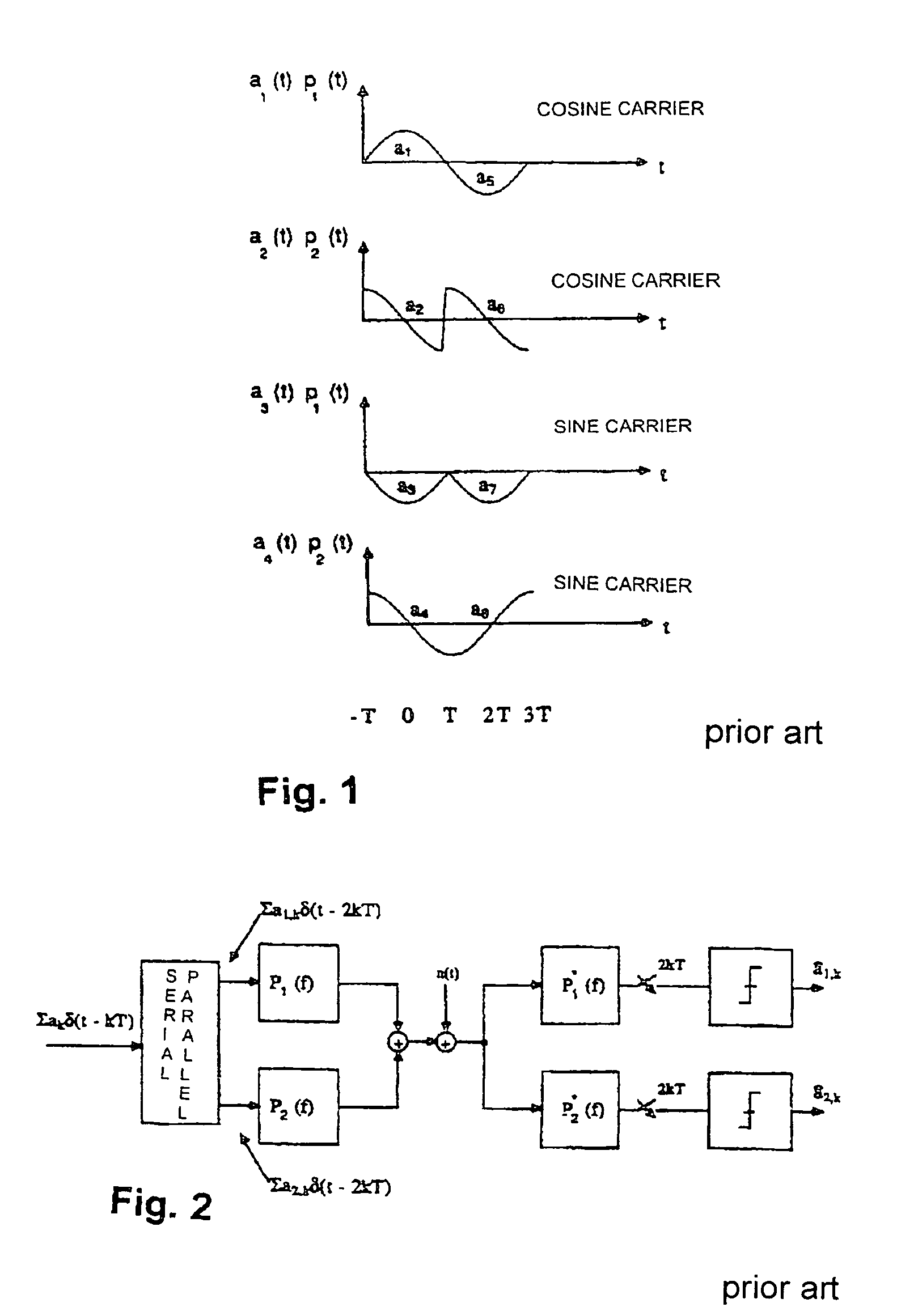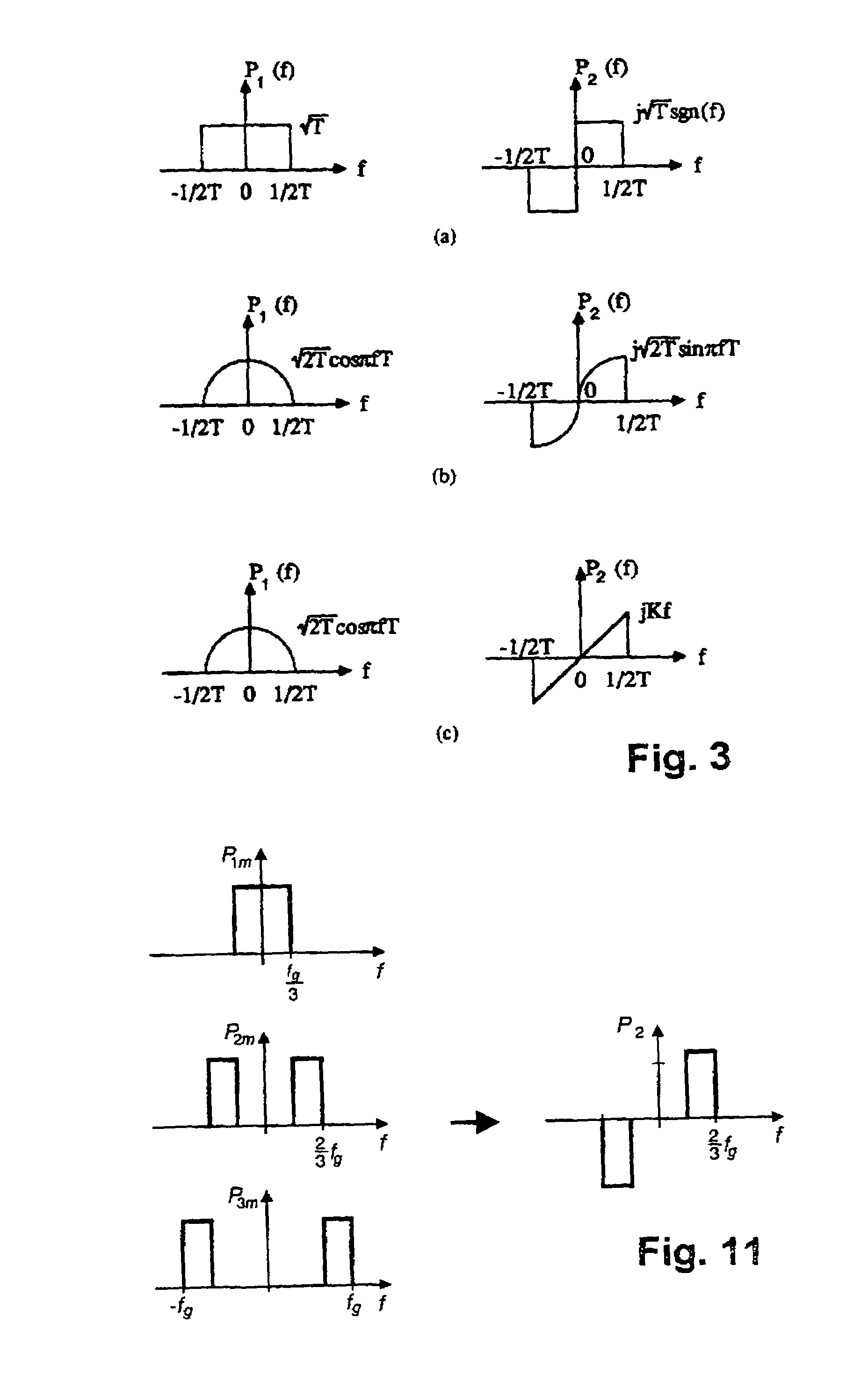Method for dividing the bit rate of QPSK signals into two or several subchannels
a technology of qpsk signals and subchannels, applied in the field of dividing the bit rate of qpsk signals into two or several subchannels, can solve the problem of only achieving üs
- Summary
- Abstract
- Description
- Claims
- Application Information
AI Technical Summary
Benefits of technology
Problems solved by technology
Method used
Image
Examples
example e
[0048 shows that P1 and P2 can also be made equal in amount in this region. Additional channels having the same flanks can be added in the frequency multiplex. In this manner, one arrives at a multi-carrier system. In order for no cross-talk to occur, the individual channels must be separated in terms of frequency, in other words they are not allowed to overlap, at first, as is shown in Example f.
[0049]The root Nyquist flanks can also overlap, in terms of frequency, as shown in Example g. However, in this case, not only a square cross-talk but also an in-phase cross-talk occurs, which can be made to zero by means of an offset of adjacent channels by half a bit duration in the scanning time point (OQPSK).
[0050]This filter arrangement in the same frequency range will be called Variant B. As compared to Variant A, there is no advantage in the total bit rate, as was explained in connection with the explanation of FIG. 3a, which corresponds to Variant B. The filters in each channel (real...
PUM
 Login to View More
Login to View More Abstract
Description
Claims
Application Information
 Login to View More
Login to View More - R&D
- Intellectual Property
- Life Sciences
- Materials
- Tech Scout
- Unparalleled Data Quality
- Higher Quality Content
- 60% Fewer Hallucinations
Browse by: Latest US Patents, China's latest patents, Technical Efficacy Thesaurus, Application Domain, Technology Topic, Popular Technical Reports.
© 2025 PatSnap. All rights reserved.Legal|Privacy policy|Modern Slavery Act Transparency Statement|Sitemap|About US| Contact US: help@patsnap.com



